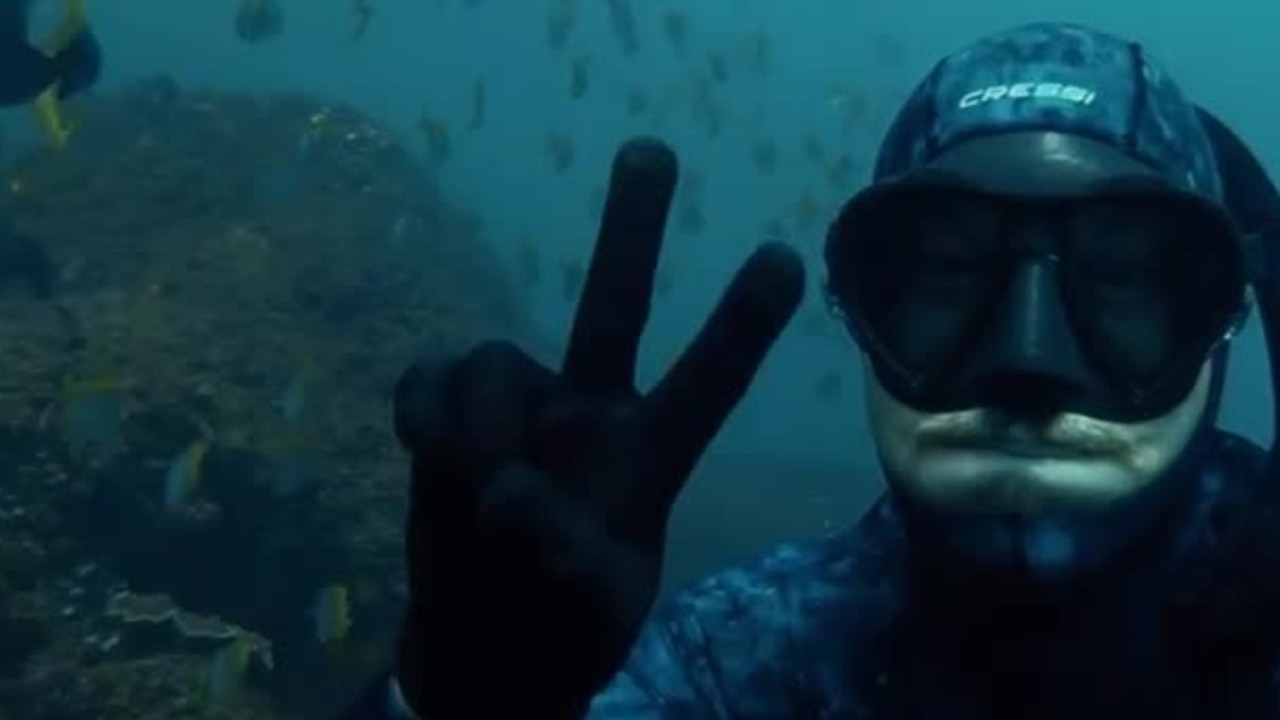
Australians were left shocked yesterday by the news Winter Olympics star Alex “Chumpy” Pullin had died after a freak drowning incident while spearfishing off the Gold Coast’s Palm Beach.
The high-profile champion snowboarder was found unresponsive on the ocean floor at an artificial reef by a snorkeller, who called for help from a group of nearby surfers, Queensland Police said.
The alarm was raised and a lifeguard raced to assist, pulling him from the surf on a jet ski.
Paramedics performed CPR for 45 minutes but the 32-year-old couldn’t be revived.
Police say Pullin wasn’t using oxygen at the time, but was free diving, and Queensland Ambulance Service said he was found wearing a weight belt.
It’s believed the seasoned free diver – who regularly went spearfishing – suffered a shallow water blackout. Here’s what that means.
RELATED: Pullin’s girlfriend witnessed tragedy
RELATED: Aussie Olympian’s sad final posts
WHAT IS A SHALLOW WATER BLACKOUT?
The term “shallow water blackout” is commonly used to describe a loss of consciousness under water caused by a lack of oxygen to the brain following breath-holding.
Also know as “hypoxic blackout” or “apnoeic hypoxia”, according to a report by the Medical Journal of Australia it’s a “distinct and largely preventable cause of drowning”.
It can affect anyone – even physically fit and competitive swimmers – who is holding their breath, Shallow Water Blackout Prevention said.
“We’ve known about it since the 50s. I’ve only written about it since 1985 and people have only started listening since 2000, so it’s been a long haul,” Dr Tom Griffiths told 60 Minutesin 2018.
Dr Griffiths is largely considered the world authority on shallow water blackout, and said he believes it’s the single biggest killer of competent swimmers.
“The very competitive Type A personality, if I can say that, the person who pushes themselves to the limit, and see how much longer they can hold their breath or how much further they can go and again that’s a recipe for disaster, particularly if they do it over and over and over again,” he said.
RELATED: World reacts to Alex ‘Chumpy’ Pullin’s shock death
HOW DOES IT HAPPEN?
A shallow water blackout occurs because the normal, protective “breakpoint” – the irresistible urge to breathe – has not been reached before consciousness is lost, according to Royal Life Saving Australia.
“The most common cause is voluntary hyperventilation before submerging. Hyperventilation, or overbreathing, involves breathing faster and/or deeper than the body requires. There are other less common causes, relating to heart abnormalities, which lead to loss of consciousness in the water follow hyperventilation,” they explained.
Though its name refers to “shallow water”, it can happen at any depth.
WHAT IS THE ‘BREAKPOINT’?
Two chemical sensors in the body detect levels of oxygen and carbon dioxide in the blood, Royal Life Saving Australia explained, to protect us from a lack of oxygen.
The carbon dioxide sensor is the most sensitive, and when it rises to a critical point the “breakpoint” is reached first.
“Normally, when a swimmer is trying to stay underwater for as long as possible, the ‘breakpoint’ forces the swimmer to surface and take a breath,” they said.
“If a person is submerged and the ‘breakpoint’ is reached whilst the mouth and nose are still underwater, the irresistible urge to take a breath occurs, and water is inhaled into the lungs.”
Hyperventilating before underwater swimming or diving is dangerous because if the swimmer “blows off” too much carbon dioxide before submerging, it will take longer for the carbon dioxide sensor to force the “breakpoint”.
“This prolonged period may not occur before the oxygen sensor comes into play and the drowning person may lose consciousness underwater.”
RELATED: How famed Olympian got nickname
HOW COMMON IS SHALLOW WATER BLACKOUT?
Between July 2002 and June 2015, shallow water blackout caused 22 drowning deaths in Australia, the Medical Journal of Australia study found, all of who were males, and five cases of which occurred while spearfishing.
According to Royal Life Saving Australia, several Australians drown each year from Shallow Water Blackout due to hyperventilating before they submerge – in everywhere from free diving in the ocean to public pools, where people train for sports.
